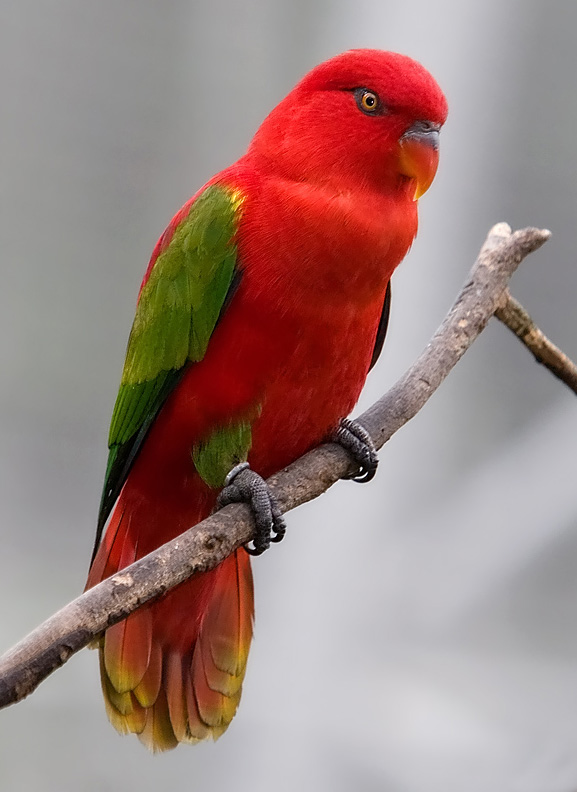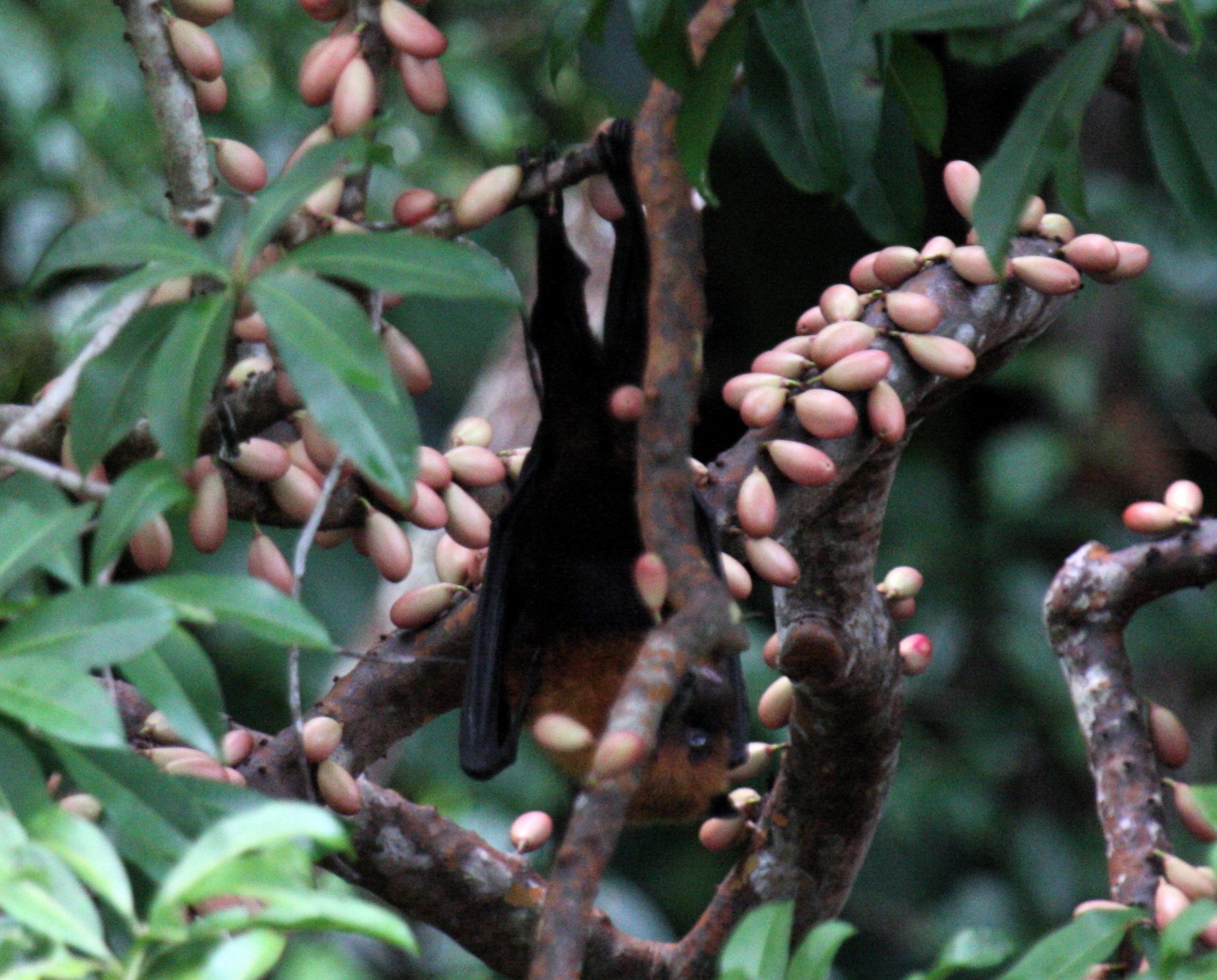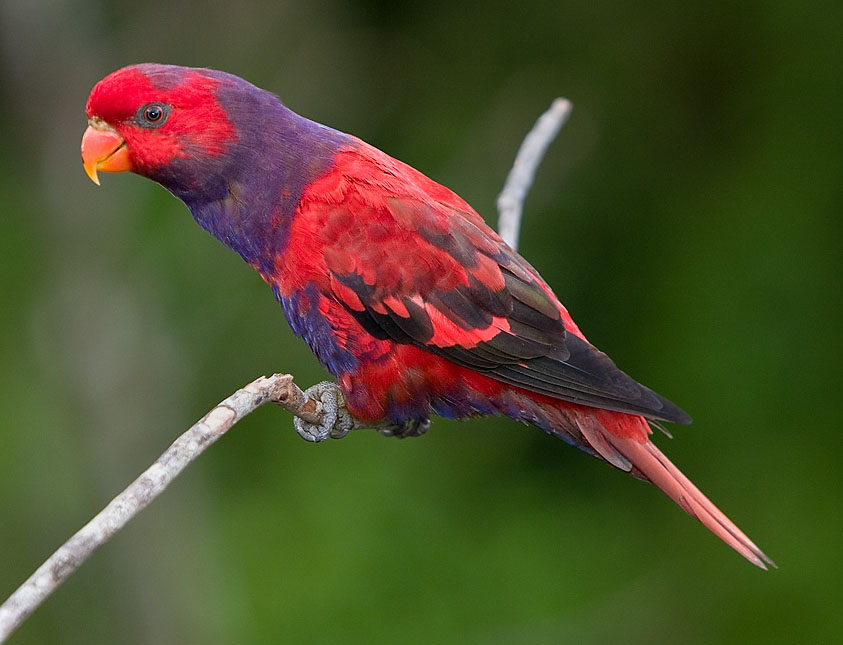Halmahera Rainforests
The ecoregion’s land area is provided in units of 1,000 hectares. The conservation target is the Global Safety Net (GSN1) area for the given ecoregion. The protection level indicates the percentage of the GSN goal that is currently protected on a scale of 0-10. N/A means data is not available at this time.
Bioregion: Sulawesi & Maluku Islands (AU14)
Realm: Australasia
Ecoregion Size (1000 ha):
2,692
Ecoregion ID:
140
Conservation Target:
88%
Protection Level:
1
States: Indonesia
This small ecoregion, consisting of Halmahera and associated islands, has the highest endemism rate per area of anywhere in the world. It harbors 26 endemic species and four monotypic (only one species) genera of birds, a reflection of the exceptional level of uniqueness of the bird fauna, many of which are spectacular, such as the ivory-breasted pitta and violet-necked lorry, as well as the iconic standardwing bird-of-paradise. Wallace’s giant bee, the world’s largest bee, also occurs here.
.jpeg)
The flagship species of the Halmahera Rainforests ecoregion is the standardwing bird-of-paradise. Image credit: chenshu, iNaturalist
This ecoregion represents the moist forests on Halmahera, Morotai, Obi, Bacan, and the other nearby Maluku Islands in the northeastern Indonesian Archipelago. The geologic history of these islands is a very complex mixture of inner volcanic island arcs, outer volcanic island arcs, raised coral reefs, and fragments of continental crust. Halmahera is a product of a collision between two islands approximately 1–2 million years ago.

Chattering lory. Image credit: Doug Jansen, Creative Commons
Tropical lowland and montane forests cover the islands of this ecoregion, with drier forests in southern rain shadows and on ultrabasic (serpentine) soils. Most of the remaining habitat in this ecoregion is semi-evergreen rain forest and includes eight characteristic dipterocarp species: Anisoptera thurifera, Hopea gregaria, H. iriana, H. novoguineensis, Shorea assamica, S. montigena, S. selanica, and Vatica rassak. Eight of the 38 mammal species native to this ecoregion are endemic, including the ornate cuscus, Rothschild's cuscus, Moluccan flying fox, and lesser tube-nosed bat.

Moluccan flying fox. Image credit: Kai Bansner, Creative Commons
Most lowland and coastal forests have been converted for agriculture—oil palm, pulp, clove, and papaya plantations—and settlement, often after they are initially logged. Damara (Agathis) trees are still sought in selective logging in remaining mid-elevation and montane forests. The development of logging roads has further sped up the rate of conversion, as did transmigration projects. Nickel and gold mining operations are planned on Bacan and Halmahera. The unsustainable capture of parrots, lizards, and other species for the wildlife trade threatens several species.

Violet necked lory. Image credit: Doung Jansen, Creative Commons
The largest protected area is Aketajawe-Lolobata National Park (1,673 km2), a split reserve that covers two larger montane forests on Halmahera. The remaining six protected areas are all small reserves on mountains or they protect offshore islands. Most remnants of lowland forest remain unprotected, except on the small island reserves. Wayabula on Morotai, Gunung Sibela on Bacan and Pulau Obi on Obi have been proposed as important sites for protection. These are included within the 27 terrestrial Key Biodiversity Areas that have recently been proposed.
The three key conservation actions for this ecoregion are to: 1) establish effective protected areas at Wayabula and Gunung Sibela, and Pulau Obi; 2) protect a greater representation of distinct plants and animals within the archipelago through community-based conservation areas; and 3) enforce wildlife trade laws to prevent the removal of parrots, lizards, and other wildlife from their native habitats.
Citations
- BirdLife International. 2018. Endemic Bird Areas factsheet: Northern Maluku. Downloaded from http://www.birdlife.org on 23/04/2018.
- CEPF. 2015. Wallacea Biodiversity Hotspot Ecosystem Profile. Critical Ecosystem Partnership Fund, Washington DC. 353 pp.
- Monk KA, Y De Fretes, G Reksodirarjo-Lilley. 1997. The Ecology of Nusa Tenggara and Maluku. Periplus Editions, University of Michigan.



